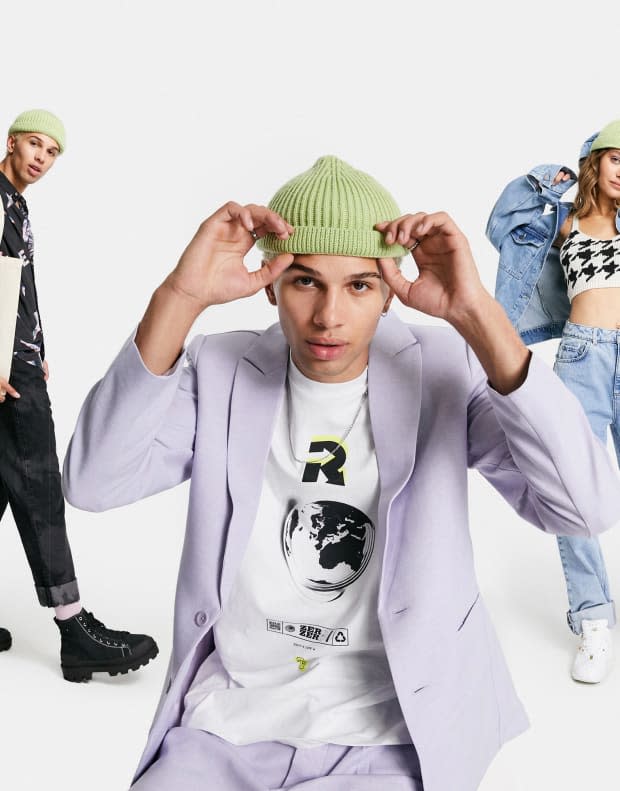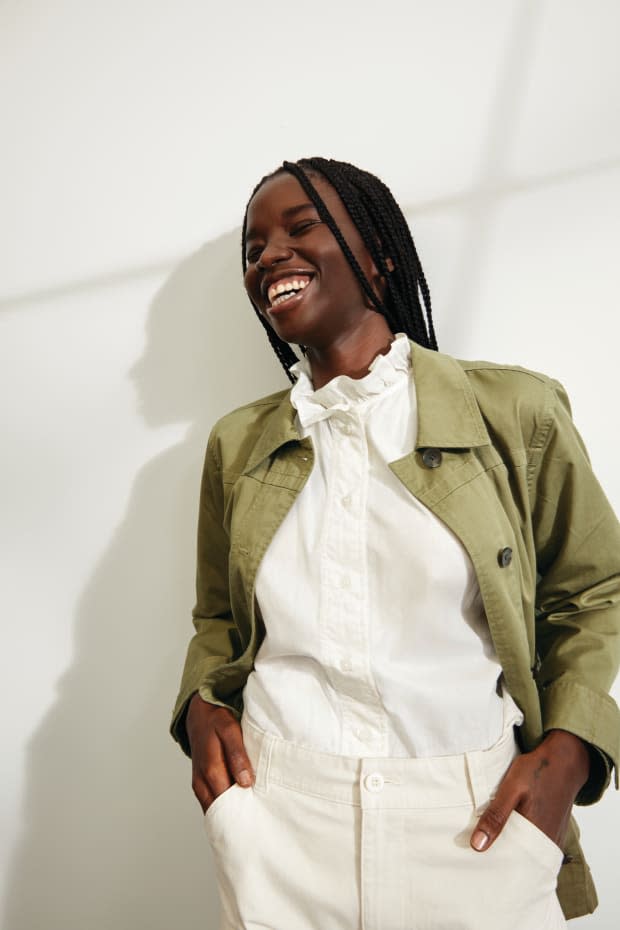Approaching Sustainability as a Mass-Market Retailer: A Case Study With Walmart and Asos
One launched a small "circular" collection with much fanfare, the other started employing organic and recyclable fabrications and barely told anyone. Which approach works best?

After decades of being written off as a fringe issue, sustainability has taken center stage, and now everybody from Kanye West to Coach wants in on it. As luxury businesses from the top of the fashion food chain are clamoring to be seen as eco-friendly, mass-market retailers are following in their wake.
The most recent to come into the spotlight are Walmart and Asos, both of which unveiled new initiatives in September. Each prompts the discerning person to ask: Is this genuine cause for celebration, or is it greenwashing?
The initiative from Asos was announced with much fanfare, as the brand said on Monday that it was releasing its "first-ever circular collection." Consisting of 29 trendy pieces ranging from denim to knitwear, the collection is described by Asos as "circular" because each piece "was designed to meet at least two of the following foundations of the circular economy: designing out waste and pollution; keeping products and materials in use; and regenerating natural systems," according to an email from the brand.
Circular design, which has been something of a holy grail for fashion in recent years, entails creating products that never go out of use or end up in a landfill, because they're constantly being made into something new. It's a worthy goal, and one that's been pursued by a range of brands known for making sustainability central to their ethos, from Maggie Marilyn to Eileen Fisher.
In the pursuit of circularity, it seems like Asos has accomplished some genuinely laudable things: The brand claims to have used recycled materials, created pieces made from just one material (which make them more recyclable in the long run), upcycled and trained all of its designers in circular design principles to minimize waste.
The problem comes from the fact that none of these things actually guarantees that the garments, or the raw materials they're made of, will stay in use at the end of their lifespans. While brands like Adidas and Eileen Fisher have implemented take-back programs to take responsibility for the products they create once they're done being used, Asos has done no such thing.
Any circularity, then, would have to come from someone else finishing off the circle — but a circle that doesn't make it all the way back to the beginning is just a wavy line. In other words, it's the old linear economy, with an infusion of recycled materials at the beginning and a hope that someone else will step in to close the loop. That infusion of recycled materials is a good step, but it's not the same as genuinely circular design. Claims to the contrary are misleading at best.
While Asos's launch has already become the somewhat-critiqued buzz of the sustainability world, Walmart's seems to have avoided notice altogether, with most press coverage of the retailer's new initiative barely mentioning sustainability, if at all. That probably stems from the fact that Walmart launched its new in-house brand, Free Assembly, with almost no references to sustainability in its press releases.

But the messaging on Walmart.com makes sustainability much more central. "We're out to build a brand that looks good, is priced great, & is committed to sustainability," the Free Assembly landing page on Walmart.com reads. A prominent banner graphic adds that denim products are made "in LEED and Fair Trade Certified™ facilities that aim to protect both the environment & the workers."
In an email to Fashionista, a Walmart rep declined to add much more detail about what Free Assembly's "commitment to sustainability" means, simply saying "we will share sustainable aspects of the line as they relate to individual products at point of sale." Clicking through to individual products on the site, you'll find multiple denim pieces made from a minimum of 97% organic cotton, a quilted bomber with a shell made of 100% recycled polyester and a filling of non-recycled polyester.
Though Walmart positioned Free Assembly as its fashion-forward "timeless essentials" offering in press releases, this focus on sustainable materials — though largely unmentioned by the company — is rather remarkable. Based on materials alone, it could put Free Assembly on a similar playing field to many brands that have built their entire audience around promoting sustainability. And though its prices are alarmingly low (pieces top out at $45 on the higher end), Free Assembly's reliance on Fair Trade factories, at least in its denim line, is similar to what many "ethical fashion" brands use to assure customers that they're not underpaying their workers.
Overall, it seems like both Asos and Walmart are trying to move toward more environmentally-conscious options — it's just that Asos is over-promising and under-delivering in this case, while Walmart is doing the opposite, at least for now.
Critics would be right to wonder whether the low prices each retailer slaps on its clothing could ever allow for garment sewers to be paid fair, livable wages. And an even bigger question is raised by the tens of thousands of pieces these companies make each year, for sale on a planet that already has enough garments on it to clothe every person alive — a planet that is seeing its natural resources diminish due to climate change, overconsumption and more.
As needed as a total system overhaul may be, it was never likely that companies were going to go straight from making cheap, plastic-derived fast fashion to stopping production entirely. If nothing else, these initiatives show that every single tier of the fashion industry is starting to grasp that citizens value sustainability. As to which approach best convinces people to keep opening their wallets, the jury's still out.

